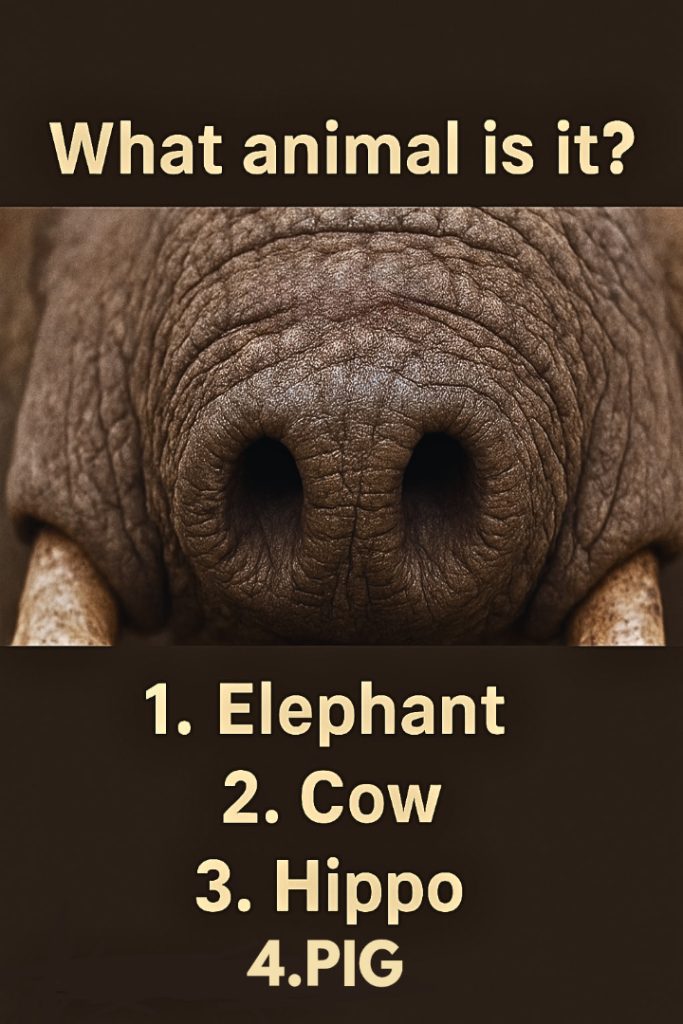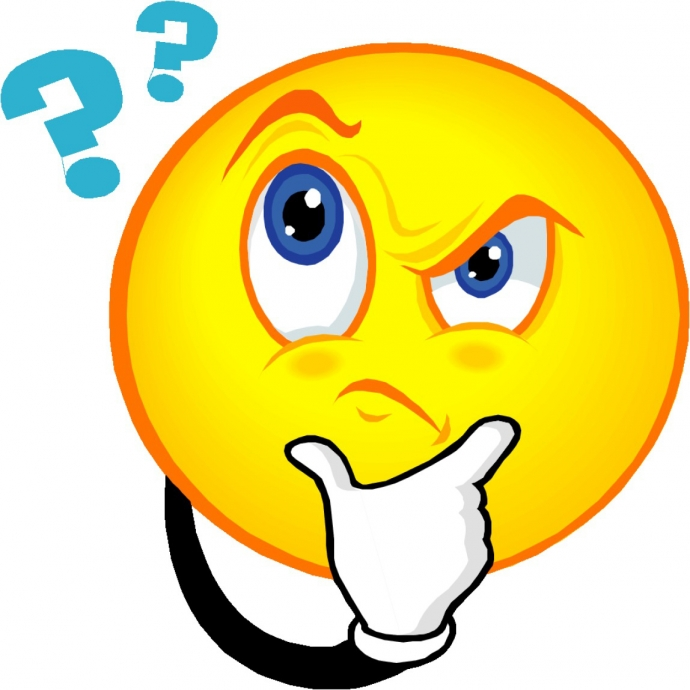A riddle for your eyes: take a long look at that close-up snout. Two round nostrils, heavy folds of skin, and what appear to be pale, curved points peeking from the lower corners. Tricky, right? Before you scroll, lock in your guess. Then walk through this little “wildlife forensics” guide with me and see if you nailed it.

Why this kind of riddle fools so many people
When we zoom in on a single feature—like a nose—we lose the easy context of ears, body shape, or tail. Our brains rush to match the texture and color to the most familiar animal. Add a sepia tone and dramatic lighting, and suddenly a barnyard face looks like a safari giant. Common traps include:
- Texture bias: deep wrinkles make people think “elephant skin,” even when the structure doesn’t fit.
- Size illusion: a macro photo makes a small snout look massive, which nudges guesses toward big animals.
- Feature cropping: hiding the mouth, eyes, and ears forces you to rely on tiny clues many folks overlook—nostril shape, skin seams, hair, and tooth placement.
The cure? Slow down and compare each option anatomically. Let’s do it.
Step-by-step: A nose-by-nose investigation
We’ve got four candidates on the quiz card: Elephant, Cow, Hippo, and Pig. To keep this clean, we’ll analyze the telltale traits of each animal’s nose and see which one fits the photo best.
Video : Guess the Animal Game and Learning to Count Animals
1) Elephant: the trunk test
- Structure: An elephant’s “nose” is a prehensile trunk, an elongated muscular tube with the nostrils at the very tip. African elephants have two finger-like projections at the end; Asian elephants have one.
- Nostril shape: The openings are forward-facing oval slits at the trunk’s tip, not on a flattened round disc.
- Skin clues: Yes, elephants have thick, cross-hatched wrinkles, but the trunk’s tip looks like a flexible fingertip, often with visible crease lines radiating around the small “fingers.”
- Deal-breaker: The photo shows a short muzzle with a round nose-pad and two circular holes—not the free, elongated trunk tip. Also, the curved pale points at the bottom edge don’t match an elephant’s tusk placement relative to the trunk’s end.
Verdict: Not an elephant.
2) Cow: the split seam giveaway
- Structure: Cattle have a broad, hairless muzzle (planum nasale) that’s typically moist and smooth.
- Nostril shape: Large, comma-shaped openings with a clear vertical philtrum (a central seam) running from the upper lip up through the nose pad.
- Surface texture: Shiny, pebbled, and often wet; much less wrinkled than what we see in the photo.
- Edges: You’d expect to see upper lip hair and a softer transition to the face, not deep, rugged folds.

Verdict: The heavy wrinkles and circular nostrils don’t match a cow’s glossy, seam-split nose. Not a cow.
3) Hippo: the snorkel-on-top rule
- Structure: Hippos place their nostrils on top of the snout so they can breathe while mostly submerged. The openings can close like valves underwater.
- Nostril shape & position: More dorsal (top-side) than front-facing; the snout looks broad and upturned when seen head-on.
- Skin clues: Hippo skin is thick and nearly hairless, often smoother in close-ups than the deeply wrinkled hide in our photo.
- Tooth clues: Hippos have huge canines and incisors that protrude when the mouth is open; you wouldn’t typically see small, pale, lateral points with the mouth closed.
Verdict: The forward-facing round nostrils and the suspected small tusk-tips don’t fit a hippo. Not a hippo.
4) Pig (boar): the snout that fits like a key
- Structure: Pigs and wild boar have a distinct snout disc (the nose pad) that’s round and flat at the front, with two circular, forward-facing nostrils.
- Cartilage & wrinkles: Their snout is reinforced with cartilage for rooting, creating radiating wrinkles and folds around the nose pad—exactly what we see.
- Tusks: Adult wild boar (and some domestic pigs) display curved tusk tips that can peek out at the lower corners of the muzzle, even when the mouth is closed. Those pale, curved points in the photo? They match boar tusks beautifully.
- Hair & hide: Boar have coarse bristles and tough, textured skin—often more rugged than a cow’s wet nose or a hippo’s smoother surface.
Video : Guess The Animal by Shadow | Guess The Animal Quiz | 30 Animals
Verdict: The anatomy lines up point-for-point. The round nose disc, circular nostrils, radiating wrinkles, and the visible tusk tips seal it.
Why the pig wins (and the elephant misleads so many)
Most wrong guesses shout “Elephant!” because the skin looks thick and deeply wrinkled. That’s the texture trap. But form beats texture in ID puzzles. An elephant’s trunk extends; a pig’s snout ends in a pad. If you remember one rule: Elephants breathe at the tip of a trunk; pigs breathe through a round disc. The photo shows a disc, not a trunk tip.
Add the small, curved lower tusks—a dead-giveaway for wild boar—and the case is closed.
A quick comparison cheat sheet
- Elephant: Elongated trunk, nostrils at the tip, finger-like projections.
- Cow: Moist, glossy nose pad; visible vertical seam; soft texture.
- Hippo: Nostrils on top of the snout; valve-like slits; smoother, hairless look.
- Pig/Boar: Flat round nose disc; two circular holes; radiating wrinkles; tusk tips visible at lower edges.
Only one option fits all clues: Pig—specifically, it looks like a wild boar snout.
The final answer
Correct answer: PIG (a wild boar).
It’s not an elephant. The circular nostrils on a round snout disc and those subtle tusk tips give the game away.

Your turn—test your eye and join the chat
Did you guess it right on the first look, or did the “elephant skin” illusion fool you? Drop your answer and your reasoning in the comments. If you spotted a different clue—like the tusk tips or the pattern of wrinkles—tell us what tipped you off.
And if this puzzle sharpened your eye, good! The best way to train your brain for visual riddles is to practice looking for structure, not size or texture alone. Want more? Share this post with a friend, challenge them to beat your time, and keep an eye out—we’ll bring more close-ups that test your logic, memory, and attention to detail.
Happy puzzling, wildlife detectives!